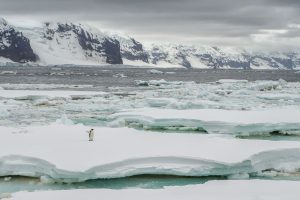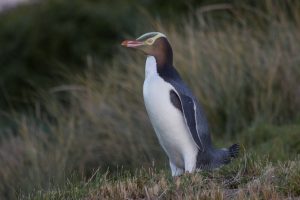Hoiho spotting at Curio Bay
Growing up in Wellington, I often saw our native birds in their element. Tūī swooped across the front yard, kererū perched precariously in the kōwhai trees and we were even treated to the kārearea/NZ falcon on rare occasions.
Naturally I took an interest in our native birds and their curious ways. I spent a lot of time outdoors and on conservation land. Come 2015, I realised It would be sinful if I didn’t explore a bit more of New Zealand’s environmental marvels before stepping out the front door to do some global travel.
I managed to knock off a solo journey to the Aoraki/Mt Cook National Park in April, encountering numerous native birds – including my personal favourite, the kārearea, and, for the first time, a kea. There was plenty more for me to see, so I locked in a trip to visit the bottom of the South Island – the Catlins Forest park – with my good pal, Hamish.
Come late May, we flew to the deep south and were greeted by a brisk southerly and sunshine at Invercargill airport. We clambered into the rental car and started the 90 minute journey to Curio Bay.
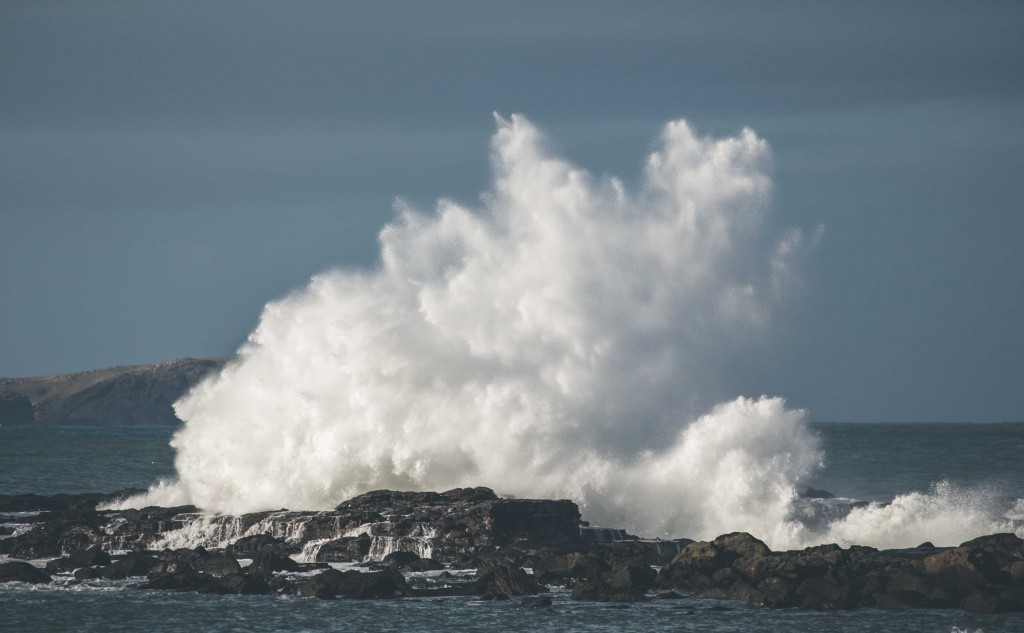
Wild Catlins weather (Photo by Danny Rood)
One of the big attractions of The Catlin’s was the hoiho/yellow-eyed penguin – one of the world’s rarest penguins. In 2000, there were around 6000-7000 adult hoiho left – and even now, scientists aren’t sure of their population numbers. So managing to see one in the wild, or, better yet, photograph one would be fantastic.
We arrived to radiant sunshine, which quickly faded as an intense storm quickly drove us indoors, searching for dry clothes. Our best chance to spot the hoiho was around dusk as they would return from the ocean after a days’ feeding. We just hoped the weather would play ball.
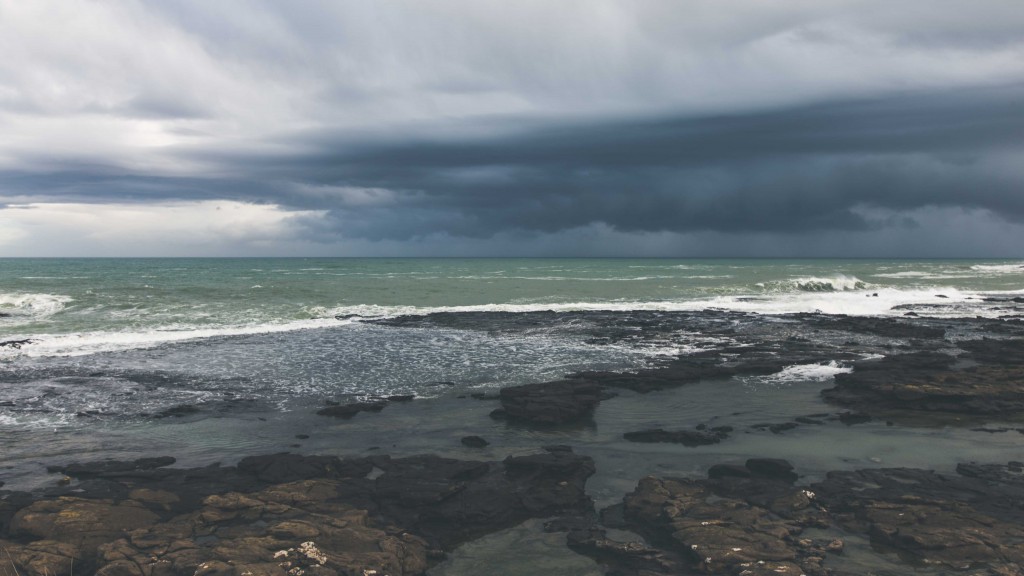
A storm rolls in over Curio Bay (Photo by Danny Rood)
The rains eased but it was still wet and wild. We headed down to the Curio Bay viewing platform at about 4.30pm, with sunset 45 minutes later. Half a dozen others braved the elements. The stiff wind and rain felt like several whips piercing our skin. We waited and we watched but weren’t having a lot of luck. And it was getting darker. It was getting rapidly darker. It was now 20 minutes after sunset. Where were these birds? It was time to give up and give it another go tomorrow.
Hamish became excited and pointed. He claimed he had spotted a hoiho about 100m down the beach.
“Where exactly?” I asked.
“Behind that rock!” he squealed.
“It’s a coastal beach. There are rocks everywhere. Which one?”
“That big, round one beside that other smaller one, like, way down the beach.”
With this magnificent description I figured out which big, round rock he was on about. But there was no penguin nearby. Our fellow hoiho spotters couldn’t see any sign of life either. Hamish’s hidden hoiho was clearly a lie, a part of some elaborate ruse to make me shuffle down the beach in the pouring rain, wielding my camera and skating over the detergent-like surface for his own amusement.
Hamish has an excellent poker face. He’s told me these kinds of lies before and I was pretty sure he was doing it again. But, having never seen a hoiho before, I decided to take a risk and head down to investigate. Just in case.
I approached cautiously, making sure not to startle or disturb the bird. Hoiho are easily startled so it’s important to keep your distance and remain quiet.
Struggling to stay on my feet, I battled my way along the rocky, seaweed laden bay – toward the infamous “big, round rock” to find the phantom hoiho… And there it was! It popped out from behind a rock about 20 metres away. “Wow, he wasn’t making it up!” I thought. The hoiho jumped rhythmically up the beach like a child dominating a game of hopscotch, before stopping and beginning some form of penguin boogie.
It was so gloomy at this point I had to turn the camera’s ISO (light sensitivity) setting up to 12800, much higher than the 400-800 range I usually shoot wildlife in. It was my only hope of a half-decent photo. Although the Canon 6D is not the best camera for wildlife photography, it is superb in low light conditions.
I zoomed in, lined up the frame and clicked away as the penguin danced the night’s last dance, before standing calmly on the shore for a few seconds and waddling off into the grassy bank. I blinked through the rain and peered into my screen to see what I had captured.
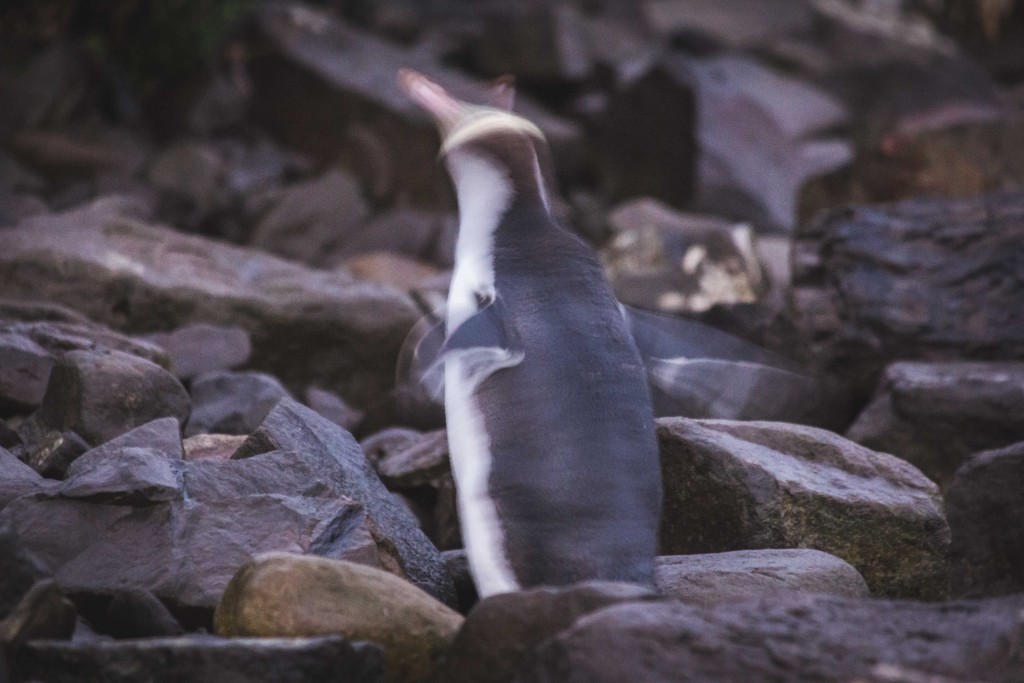
The penguin boogie (Photo by Danny Rood)
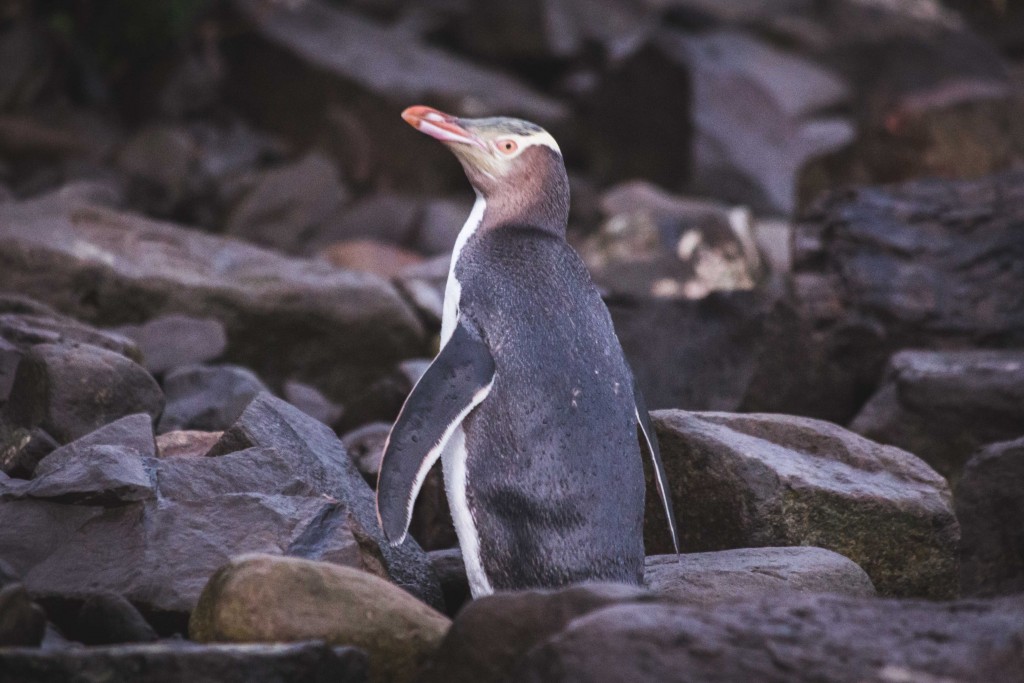
Getting my $5 worth (Photo by Danny Rood)
I was reasonably pleased with this effort and staggered back toward the viewing platform, still wondering how Hamish had managed to spot it from such a far distance.
“How….how…how did you spot that?” I asked him.
He simply replied with “because I have superior eyesight to you.”
He was right. We returned to the car, Hamish grinning after his eagle-eyed effort. I was grinning too. Capturing a photo of such a rare and majestic creature was exhilarating. And so we drove the short distance back to our accommodation where some cheese on toast and dark beer was waiting to warm our insides.
 Danny is a geologist, environmental enthusiast and camera-happy human, currently based in the United Kingdom whilst travelling around Europe.
Danny is a geologist, environmental enthusiast and camera-happy human, currently based in the United Kingdom whilst travelling around Europe.

